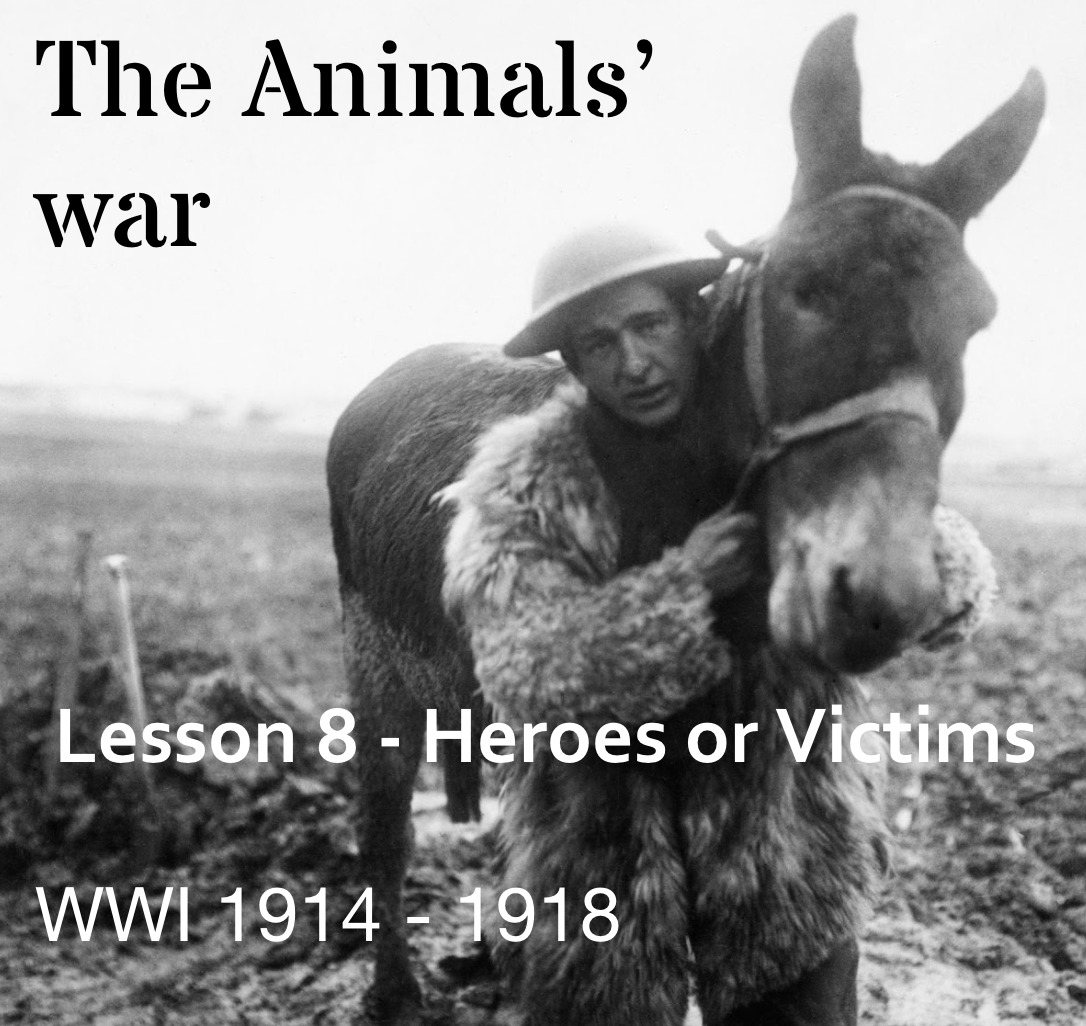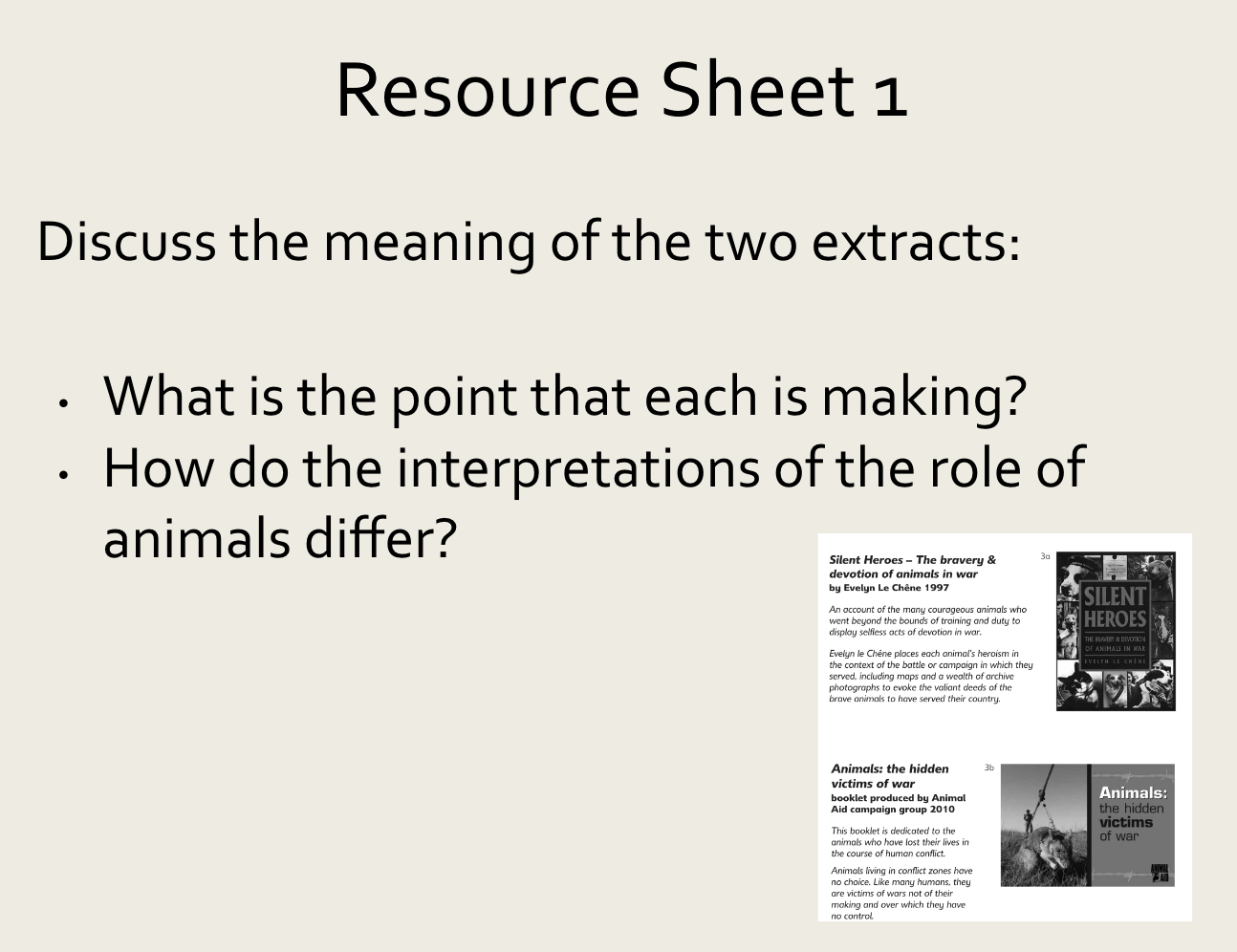17 June - 23 June
Section outline
-
Enter text here...
EXPLORE / TŪHURA learning intentions:
- We are EXPLORING the animals involved in the wars and thier effect on World War I
- We are EXPLORING historical narratives and perspectives by interpreting various kinds of sources such as primary documents, survivor movements, bystanders and collaborators.
Messengers and Heroes and Victims
Context of Lesson/Key Ideas:
The Centenary of the First World War is an ideal opportunity to look at the role of animals during this time. Some animals were used during WWI to carry messages on the battlefield.
Aims and Objectives:
• Know that dogs and pigeons were considered vital as a means of battlefield communication in the trenches of WWI.
• Understand the hazards faced by animals who were used as messengers.
• Understand the technological developments that affected battlefield communications and that led to changes in the role of animals.
Learning tasks:
Starter
• Look at the images on the first six slides of the presentation (dog leaping trench, pigeon loft, dog and pigeon messenger canisters or DORA poster).
• Ask students to get into pairs and to study either:
1) Resource sheet 1 (DORA poster), or Resource sheet 2 (dog and pigeon message canisters).
or 2) the object(s) displayed on the whiteboard
• Ask them to discuss what the objects on the sheet and/or on the screen are.
• Gather feedback and discuss.
Main Lesson
1) Messenger cards (15 minutes):
• Get into pairs or groups of three or four. You will receive with a set of battlefield communication cards :
1. Runner on foot
2. Rider on horse
3. Signals using flags (semaphore)
4. Landline telephone
5. Wireless
6. Carrier pigeon
7. Messenger dog
8. Voice
9. Heliograph
• Study the cards and arrange them firstly in order of speed and then in order of reliability.
• List the advantages and disadvantages of each form of communication.
• Decide which communication method they would use if they were cut off in no man’s land during an attack, and why.
• Discuss why dogs and pigeons were used to carrry messages on the battlefield in WWI.
2) Presentation:
• Look at Messengers PowerPoint to explain the use of messenger dogs and pigeons. Discuss the Cher Ami story.
3) Research:
• Use the factsheet: Animals in WWI part two – Messengers and Protectors and/or internet, to investigate the hazards faced by the dogs and pigeons who were used to carry messages.
Plenary
• Gather feedback and summarise the hazards faced by messenger animals in WWI.
Homework/extension
a) Find out what happened to messenger animals when the war ended.
or
b) Find out how soldiers in the Second World War communicated on the battlefield. How had technology changed? How did this affect the role of animals?

Learning Outcomes
• Know that people have different interpretations regarding the role of animals such as horses, dogs and pigeons used in WWI.
Success Criteria
• Understand how historical evidence is used to make contrasting arguments concerning the use of animals in WWI.
Sort the sources into ‘primary’ and ‘secondary’; ‘more reliable’ and ‘less reliable’; or any other grouping that helps them answer the question.
• Ask them to decide which evidence they would give most weight to, and which least?
Sort the sources into ‘primary’ and ‘secondary’; ‘more reliable’ and ‘less reliable’; or any other grouping that helps them answer the question.
• Ask them to decide which evidence they would give most weight to, and which least?
Do you think the clip portrayed the animals as heroes or victims.
Based on their knowledge of animals in WWI, how realistic do you think the film is?
- Is Joey the horse is represented as a hero or a victim, or both.
- Is the portrayal more realistic than the previous clip?
- Why do you think this?

Do you think that the animals were heroes or victims?
• In Google Classroom are Resource sheets 2 - 6.
• Carefully study the sources and then to sort them into groups that will help you answer the question above.
When analysing the soources• Think about how to sort the sources into groups:
1) that support the case that animals were ‘victims’
2) that support that case that animals were ‘heroes’
3) that could be used to support either or both
Sort the sources into ‘primary’ and ‘secondary’; ‘more reliable’ and ‘less reliable’; or any other grouping that helps you answer the question.
• Decide which evidence you would give most weight to, and which least?
Which three pieces of evidence would you choose to answer the question? Why?
Write a TEXAS paragraph to explain.
